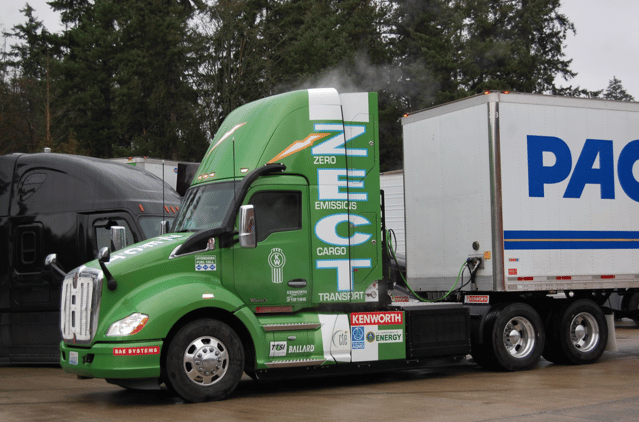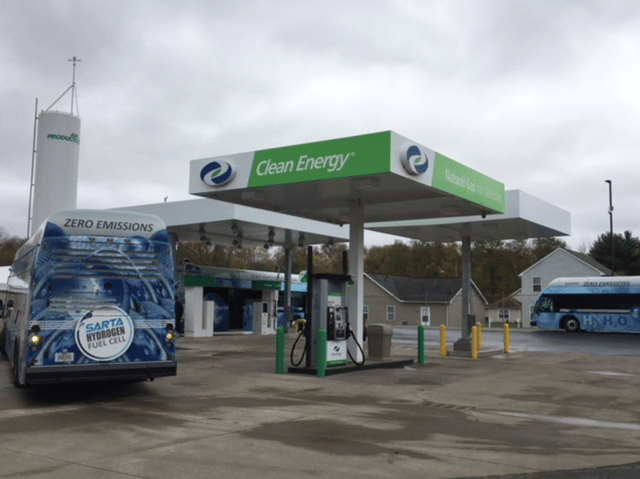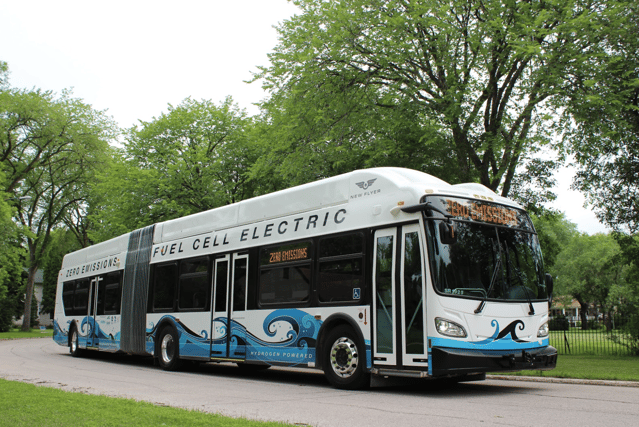We are increasingly living in a CO2-regulated world. Across the globe, the movement to “net-zero emissions” is building momentum, with hydrogen power as a central component. To date, some 70 countries have mandated carbon neutrality or net-zero carbon by 2050, and about 20 of them —representing 70% of global GDP—have identified hydrogen as key to decarbonization.
And Canada?
Canada will soon release its Hydrogen Strategy. Then we will see whether our government will include hydrogen power in its support for zero-emission vehicles—and whether their investment will be significant enough to meaningfully accelerate our progress toward carbon neutrality and support a green industrial base in Canada.
Canada is a major producer of high-carbon energy. But we are also world leaders in low and zero-emissions energy development, including hydrogen and fuel cell technologies.If Canada wants to continue to produce energy on a global scale, that energy has to be decarbonized—with hydrogen power as a major factor.
In my opinion, Canada will not achieve its net-zero carbon mandate without hydrogen energy.

The COVID-19 recovery must be ‘green’
The time for these policies is now—as the country prepares for the economic rebound from the devastation of the COVID-19 pandemic. Federal and provincial policies must be targeted. The recovery must be green and must prioritize the commercialization and deployment of “made-in-Canada” clean technology.
In Europe and elsewhere, massive green-recovery investments are already in place, with a significant focus on hydrogen. Canada risks being left behind.
It’s not about picking green ‘winners’, but about backing ‘winners’
I want to be clear that governments should not be in the business of “picking winners”. They should not be taking long-shot bets on immature technologies. What they can, and should, do is “back winners”.
This means supporting established winners with “market-ready” clean technologies. This means a targeted strategy to match our clean technology strengths to the world’s urgent energy and environmental priorities.
And when it comes to hydrogen power, Canada has world-class competencies.
Decarbonizing hard-to-abate sectors
Ballard has been developing and manufacturing hydrogen fuel cell solutions for decades. As the technology has matured, it has become widely recognized that one of the strongest value propositions for fuel cells is to decarbonize medium and heavy-duty motive applications, like transit buses, commercial trucks, trains and marine vessels.
 Class 8 Hydrogen Truck. Image Courtesy: Kenworth ZECT
Class 8 Hydrogen Truck. Image Courtesy: Kenworth ZECT
Importantly, to date, these sectors have been considered “hard-to-abate”, with their heavy payloads, high utilization, long daily ranges, and the need for fast refueling—the very areas where hydrogen fuel cells excel.
Indeed, the need to decarbonize heavy-duty transportation is real: buses and commercial trucks represent about 10% of the vehicles on North America roads, yet they disproportionately contribute about a third of the GHG emissions—and a whopping two-thirds of NOx and particulate (PM 2.5) emissions.
Many of the sectors also use centralized depot refueling, where vehicles currently return to base to refuel at night. This means we don’t need to build out a distributed hydrogen refueling infrastructure.
Read more: Fuel Cell Electric Buses: The Proven Solution for Canada's Climate and Economy
 Stark Area Regional Transit Authority (SARTA) Bus Depot
Stark Area Regional Transit Authority (SARTA) Bus Depot
Government policy creates the conditions for success
Elsewhere in the world, zero-emission hydrogen power is making significant inroads. We have seen that early acceptance is a direct result of clear government policy.
In California, the Innovative Clean Transit (ICT) regulation requires all transit buses in the state to be zero-emission by 2029. As a result, the large-scale transition to hydrogen buses is underway. Their Advanced Clean Truck standards (ACT), passed in June, requires a percentage of trucks of every class to be zero emission, starting in 2024. The percentage scales up each year, reaching 40% to 75% in various classes by 2035, The plan is for 100% zero-emission trucks by 2045.
Fifteen other American states have subsequently signed an MOU to adopt similar clean truck standards.
In Europe, the EU has established a centralized policy for the transition to zero-emission heavy trucks. In China, the national government has announced a bold plan for one million fuel cell electric vehicles on their roads by 2030, with a clear focus on heavy trucks and buses.
Hydrogen fuel cell vehicles are proven technology
As little as five years ago, there were relatively few hydrogen vehicles on the road. Today, there are 25,000 fuel cell passenger cars, 35,000 fuel cell forklifts and 6,000 fuel cell buses and commercial trucks in operation globally.
Over the next three to seven years, I expect we will reach the crossover point, where the total cost of ownership for certain hydrogen vehicles in medium- and heavy-duty motive applications drops below traditional fuels.
Industries and investors agree: hydrogen is the future
Every day, it seems, we see another significant investment in hydrogen. Vehicle manufacturers, Tier One suppliers and powertrain manufacturers are making strategic partnerships and investing billions in fuel cell technology. Energy giants like BP, Saudi Aramco, Shell, and Total are now investing in the hydrogen production and fueling side.
Another foundational development is the rise of ESG (Environmental, Social and Governance) investing: the investment community has (at last) come to recognize the risks of carbon-intensive investments. We are seeing enormous pools of capital exiting carbon-intensive industries and moving into sustainable businesses.
I believe this shift of capital flow will have a massive impact on corporate investments going forward, including the prioritization of zero-emission technologies.
The solutions are here in Canada
I said earlier that the government should back existing “winners”. These companies are in Canada today.
Canadians have developed some of the best-in-class, clean technologies—technologies that are deployed all over the world. Canadian companies, like Ballard, are producing hydrogen-fuelled zero-emission solutions for a growing global market.
And Canada has the hydrogen resources: in the short term, our vast natural gas and oil resources can be used to produce ‘blue’ (low-emission) hydrogen. In the mid- to longer term, our limitless renewable energy resources can produce ‘green’ (zero-emission) hydrogen.
We also have innovative companies with commercialized technologies along the value chain.
Companies like Hydrogenics, who are global leaders in electrolysis technology to produce hydrogen. And HTECH, who are leaders at engineering hydrogen refueling stations. Ballard produces industry-leading fuel cell engines. We also produce hydrogen vehicles in Canada. New Flyer is the North American transit bus market leader and they now offer fuel cell electric buses to transit operators. These buses are in active service today in the United States.
 New Flyer Hydrogen Fuel Cell Electric Bus
New Flyer Hydrogen Fuel Cell Electric Bus
These companies and others are producing solutions that are in broad global demand, and yet, so far, have little uptake here at home in Canada. All we need is strong, targeted government policies and the political will to make it happen. It’s time for Canada’s leadership to step up.
Urgent targeted, measurable “Made-in-Canada” policies
The Canadian Hydrogen and Fuel Cell Association—an industry association with over 60 members representing the hydrogen ecosystem in Canada—recently called on the Canadian government for support and recognition. Through Canada’s Hydrogen Strategy, the association hopes to see meaningful funding, to send the signal that Canada is serious about hydrogen energy.
Strong policy from the Canadian government will unlock investment in hydrogen infrastructure. It will stimulate projects and spur commercial deployment that will in turn trigger the decarbonization of many industrial sectors. Not only will it increase employment and position Canadian industry with a competitive advantage—it will significantly contribute to Canada's ability to become carbon neutral by 2050.
For example: why can’t we deploy 10,000 fuel cell electric buses and trucks over the next 10 years, in Canada, using Canadian technology?
Let’s target transit buses, government truck fleets and corporate truck fleets that could receive government incentives to go zero-emission. It can be done and let’s start with hydrogen powered transit buses as part of the existing federal program to deploy 5,000 zero-emission buses in the next 5 years. The Canadian industry is ready and the technology has shown to be cost competitive at scale.
One final, but important, point—speed matters.
This is a fiercely competitive industry, and Canadian companies are competing for talent, entrepreneurs, and capital on a global basis. We must urgently adopt bold and supportive policies, compress innovation timelines, accelerate commercialization of clean energy technologies, and rapidly scale adoption. We must begin with in-country adoption of our own solutions.
Other jurisdictions are showing us how it’s done. They are pulling ahead. They are investing more. They are investing faster. They are backing winners.
For Canada, it’s our prize to win.





